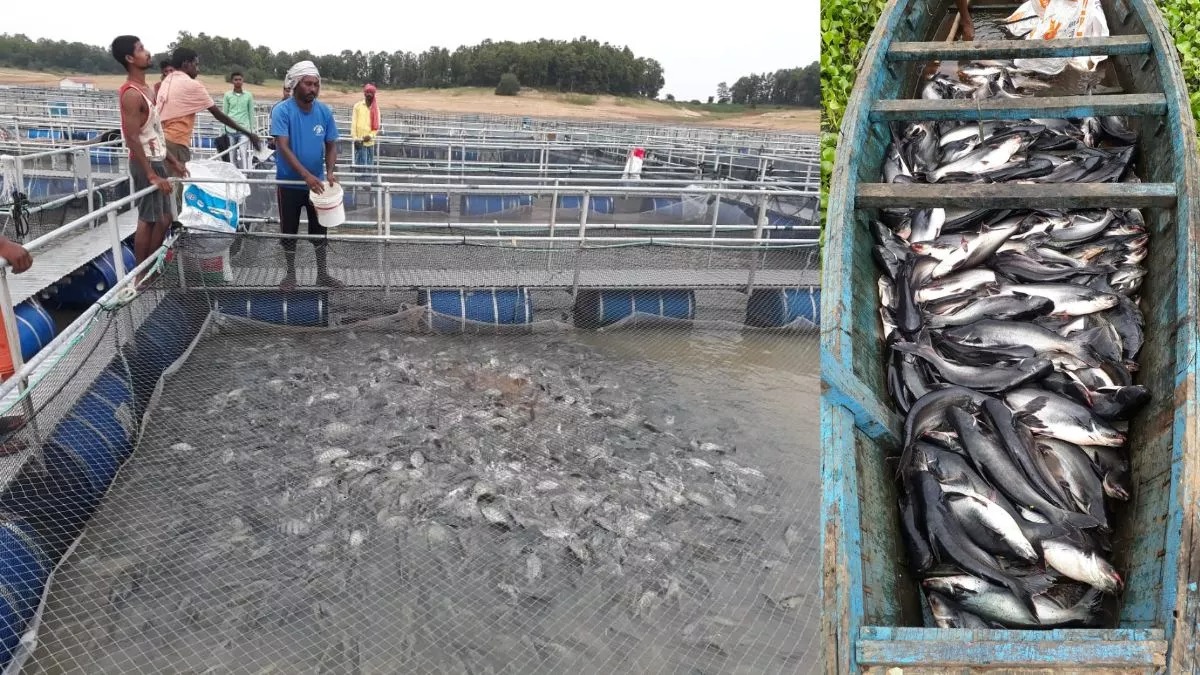 Image Source : Jagran
Image Source : Jagran
In a remarkable transformation unfolding in eastern Jharkhand, former Naxalites are trading weapons for water tanks, and insurgency for aquaculture. Thanks to the Pradhan Mantri Matsya Sampada Yojana (PMMSY), a central government scheme launched in 2020–21, fish farming has emerged as a powerful tool for economic rehabilitation and social reintegration in districts once gripped by Left-wing extremism.
Key Highlights from the Ground
- Gumla district, once a hotbed of Naxalite activity, was officially removed from the Union Home Ministry’s list of Naxal-affected areas in May 2025
- Over 25 percent of the 8,000 to 9,000 families now engaged in fish farming in Gumla were previously associated with the insurgency
- The PMMSY scheme has trained 157 individual beneficiaries in the district over four years
- The initiative has created a threefold multiplier effect in local employment and significantly reduced migration
Stories of Transformation
- Jyothi Lakra, a former insurgent who left the movement in 2002, now runs a fish feed mill in Basia block with an annual net profit of Rs 8 lakh. He received an Rs 18 lakh grant under PMMSY
- Ishwar Gop, once part of the anti-Maoist Shanti Sena, now earns Rs 1.2 lakh in profit annually from a leased government pond
- Om Prakash Sahu, a former Naxal supporter until 2007, operates six ponds and harvests 40 quintals of fish annually. He recently adopted Recirculatory Aquaculture System (RAS) technology
- Lakhan Singh, who owns 150 acres, transitioned from paddy farming to fish cultivation across five ponds, using the income to fund his children’s education
How It All Began
- The fish farming initiative was piloted in 2009 by State Fishery Extension Officer Mugda Kumar Topo, who braved security threats to introduce aquaculture in Basia block
- The government initially leased 22 tanks to interested families, including one in a remote forest area that required the cooperation of a former Naxalite for safe access
- Today, Gumla district boasts over 4,000 privately owned ponds and 360 government-owned ponds across 12 blocks
Broader Impact and Future Outlook
- The initiative has led to the repopulation of previously deserted villages, reopening of schools and hospitals, and revival of agriculture
- Ranchi district has also been removed from the Naxalite-affected list, while areas like West Singhbhum and Bokaro remain under partial influence
- The success of the program is now being studied as a model for conflict resolution and rural development in other parts of India
Sources: PTI, Moneycontrol, NDTV, Economic Times, Rediff, Devdiscourse, MSN India, Indian Express
Advertisement
Advertisement





